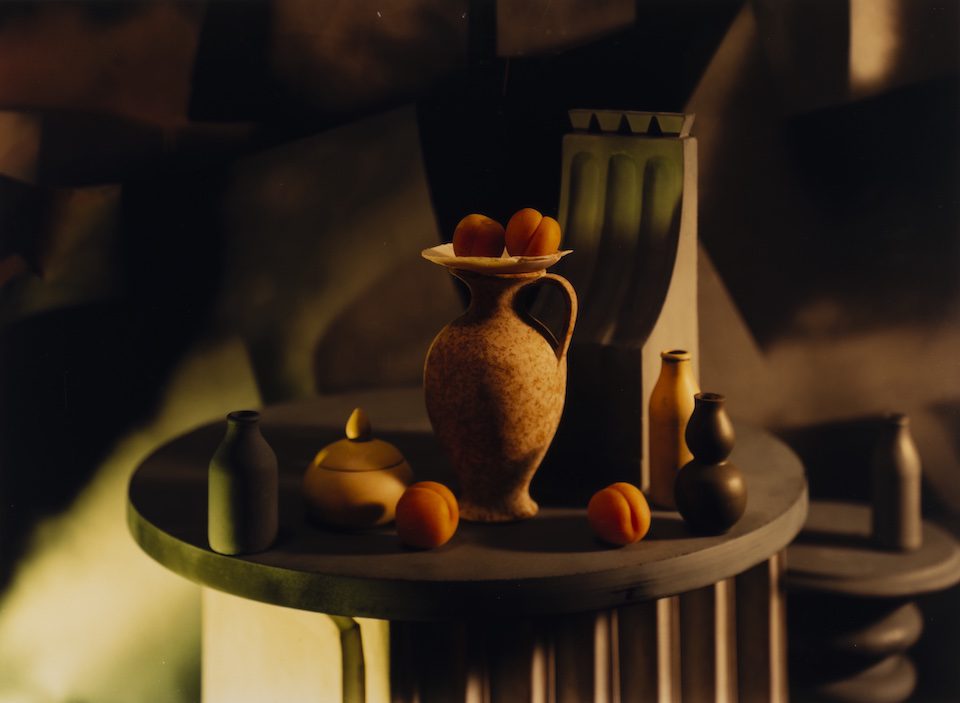It took human history until around 1800 for world population to reach one billion. The second billion was achieved in 130 years (1930), the third billion in 30 (1960), the fourth billion in 15 (1974), and the fifth billion in only 13 years (1987). Currently we’re pushing eight billion, and if things keep going as expected, the global population will reach 10 billion by 2050. These figures are having a huge effect on food production, which has industrialised to meet demand.
We are already seeing the impact of this, however. Forests are being cleared to create agricultural space at around 10 million hectares per year (according to the UN FAO). This is decreasing biodiversity and removing the buffers protecting humans from animal-borne viruses such as COVID-19 (a fact stated by the UN Environment Programme in July 2020.) Deforestation is also contaminating water, soil, plants and animals, and contributing to global warming (at a rate currently projected at 2.4°C despite 2030 pledges at COP26), which increases flooding, drought and storms and – ironically – increasing food insecurity. Boosting food production with harmful pesticides is polluting the land and water, fur- ther destabilising ecosystems and causing acute poisoning for 25 million people per year (BMC Public Health, 2020). It’s a bleak picture, and one that forms the curatorial focus for Foto/Industria, a biennale across 10 venues in Bologna.

In the future, we’ll need to produce more food, and that task is increasing in difficulty. Harvard University’s School of Public Health estimates that when stable crops are exposed to the predicted levels of CO2, they will lose up to 10 per cent of their zinc, five per cent of their iron, and eight per cent of their protein (Environmental Health Perspec- tives, 2017). Feeding 10 billion people safely and sustain- ably means reconceiving our food systems altogether. Or maybe it’s more accurate to say we’ll need to redress those systems further still, because most of us have only a hazy idea of contemporary food production methods today. Food advertising and packaging usually emphasises “natural” or traditional methods of farming and agriculture, but the reality is very different. As Francesco Zanot (b. 1979), Artistic Director of Foto/Industria notes: “Food is so multi-layered, but it’s always treated in a superficial way. We wanted to look at it without looking at the easiest side. So, there’s no food photography, nothing really related to cooking.”
Instead, Foto/Industria takes a cooler, more critical approach, exploring packaging, for example, in a show devoted to Ando Gilardi’s (1921-2012) archive of images, an eccentric collection that speaks of food’s presentation and position in Italian culture and society. Foto/Industria also includes photographs of traditional farming and hunting, but they’re via Herbert List’s (1903-1975) Favignana, unappetising images of tuna fishing in 1950s Italy, or Takashi Homma’s (b. 1962) Trails, candid images of blood left by Japanese hunters. Other exhibitions shed light on mass production from the 21st century. Mishka Henner (b. 1976) has collected satellite images of feedlots, for example, American megafarms on which hundreds of thousands of cattle are reared, living on a diet of mainly of maize, protein, supplements (often made from other cattle) and drugs. These livestock do very little exercise, and are heavy enough to be slaughtered at 12-18 months; the traditional age being four to five years. Meanwhile, Henk Wildschut’s (b. 1967) Food explores the role of information technology and mechanisation in Dutch livestock. The images are a clash between farm, factory and lab.
“[The biennale] is more about food as an industry, as it touches on so many areas – ecology, biology, economics, politics, anthropology and history,” explains Zanot. “Ecolo- gy is a recurring topic, but we could also have made a whole event on the politics of food. We wanted to go deeper into all of these different topics.” As such, the exhibitions also tap into how our desires are stimulated and manipulated. Zanot has paired Homma’s Trails with another series by the same photographer titled M, which depicts various branches of McDonald’s restaurants all around the world (to wit: there are nearly 40,000 in total). The contrasts between these two series is posed and considered: Trails reflects a close relationship between human and prey, in which the death of the animal is brutally, but authentically, obvious, whilst M documents a kind of fantasy environment, in which meat is processed into standardised patties with few discernible links to the natural world. In the red and yellow cardboard boxes, the identities of the animals are completely erased.

M highlights globalisation and consumerism at large, like the buildings in Robert Venturi, Denise Scott Brown and Steven Izenour’s seminal 1972 photobook Learning from Las Vegas, McDonald’s restaurants function, in entirety, as advertisements. These buildings offer a familiar, standard- ised form, in which familiar, standardised food is available. There’s a political edge here about diversity and monocul- tures, and this notion also comes across in another of Foto/ Industria’s exhibitions by Vivien Sansour, Palestine Heirloom Seed Library. This series documents intervention on a small scale – a local attempt to reintroduce ancient seeds and plants to farms, which addresses both the reduced diversity in crops and ecosystems, and the loss of land in Palestine.
Comparable themes underpin Lorenzo Vitturi’s Money Must be Made (2017), a series made in Nigeria at the invitation of the African Artists’ Foundation. Vitturi worked in Lagos’ rambling Balogun market, one of the world’s largest street markets where pretty much anything is for sale, from clothes and electrical appliances to ingredients and takeaways. Vitturi was inherently interested in Balogun’s multiculturalism because, whilst the fresh food and produce was local, many other items had been made in China, even traditional fabrics.
Vitturi interviewed vendors from the stalls, taking snippets from these conversations and weaving them into Aso-oke fabric (references that included the pithy series title). He also sent objects and fabrics back to his studio in London, where he assembled them into otherworldly still lifes, divorced from their environment and made all the more haunting. However, Money Must be Made also references the power imbalances inherent in these societies, and logistics, too, be- cause Vitturi also chose to make images in Financial Trust House, an abandoned skyscraper right in the middle of Balogun market. “This building was constructed for offices, mostly for western banks or companies such as KLM Royal Dutch Airlines,” says Zanot. “At the beginning it was full, but gradually these companies started to leave, and as they went away, the stalls continued to expand. Lagos is very much gentrified, but in this case, the gentrification didn’t work, and the locals won. You can see it as a form of resistance – finally the building died and gave in to the surrounding vendors.”

Vitturi’s pictures suggest something similar, contrasting grey shots of dusty bottles and artefacts abandoned in the tower with overviews of the market, which is colourful, busy and unmistakeably vibrant. One of the photographs in- cludes a sign advertising “Ecobank – The Pan African Bank”, a company set up in 1985 as a very deliberate alternative to the many western banks in operation in Africa. “The market is chaotic, but it also has its own order,” says Zanot. “The people going there to buy stuff know how it works.”
If Vitturi’s still lifes suggest an alienated view of the objects he photographs, then American artist Jan Groover’s (1943- 2012) lauded Kitchen Still Lifes does something similar for everyday utensils and crockery. Groover started the work in 1978, shooting at home in her kitchen and showing unre- markable items as a series of colours, shapes and abstracted forms. Groover initially trained as a painter and was inspired by some of the masters she studied – Caravaggio, Cezanne and Giorgio Morandi. In her work, however, she replaced fruit and musical instruments with cups, forks, knives and plates.
Groover’s motivation for doing so is intriguing. It’s been in- terpreted in terms of a feminist protest, given that the kitchen is a traditional locus for “female work”, but it might also be read as a comment on consumerism – on the dream kitchen that’s the biggest investment in most homes. Zanot points out, however, that Groover didn’t set out these connections, opting “not to close down any possibilities. You can also read it in a very formal way,” he says. “She was into the idea of reducing genres.” As such, the team is pleased to be exhibiting her images in Bologna’s Musei MAMbo, a building which also houses the permanent collection of the Museo Morandi.

“Giorgio Morandi was from Bologna, so upstairs [from the Groover show] there are many paintings which inspired her,” he explains. “There’s a really interesting dialogue here.” Groover’s installation has also been configured as a domestic space, calling upon the aesthetics of the home – a fun touch which runs through other aspects of Foto/Industria 2021. The catalogue is not a catalogue per se, for example, it’s a wayward cross between a photobook and a cookbook which includes images by the artists, alongside recipes by chef and writer Tommaso Melilli, and philosophical musings on everything from the ethics of meat-eating to the shift from Medieval to modern conventions of fine dining.
This exhibition programme was partly inspired by Filippo Tommaso Marinetti’s 1932 publication The Futurist Cook- book, which took aim at icons of Italian cuisine just as Mussolini was ramping up nationalist discourse. The cookbook was at the intersection of food and the arts, featuring contributions from the likes of Andy Warhol and Liberace as well as Lewis Carroll and Alice B. Toklas, amongst others. The publication was a cultural phenomenon, sitting somewhere between comedy, culture and manifesto. As Marinetti wrote: “It is not by chance this work is published during a world economic crisis, which has clearly inspired a dangerous depressing panic, though its future direction remains unclear. We propose an antidote to this panic: optimism at the table.”
Foto/Industria taps into this rhetoric in a curatorial vision that’s both satirical and radical, especially given the setting: “Emilia-Romagna is very much connected to food – Parmigiano Reggiano, tagliatelle, Prosciutto di Parma – symbols of Italian cuisine,” says Zanot. “And in some cases, we’re talking about big brands. Doing this in Bologna is quite a provocative statement. It’s not presenting food in an easy way.”
Words: Diane Smyth
Image Credits:
1. Yam, Calabashes, Aso-oke, Egg and Pink Sponge (2017) © Lorenzo Vitturi. Courtesy T293, Roma.
2. 16th Floor Aerial View #2 (2017) © Lorenzo Vitturi. Courtesy of the artist.
3. Jan Groover, Senza titolo / Untitled circa 1978. © Musée de l’Elysée, Lausanne – Jan Groover Archives.
4. Praying Mat Fragments, Pink Soap, Egg and Coconut Oil (2017). © Lorenzo Vitturi. Courtesy of the artist.
5. Jan Groover, Senza titolo / Untitled circa 1988-1989. © Musée de l’Elysée, Lausanne – Jan Groover Archives.





